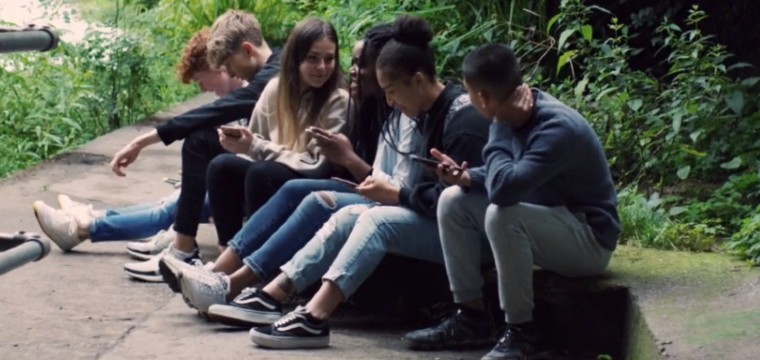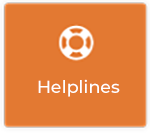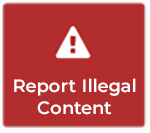Be an upstander not a bystander
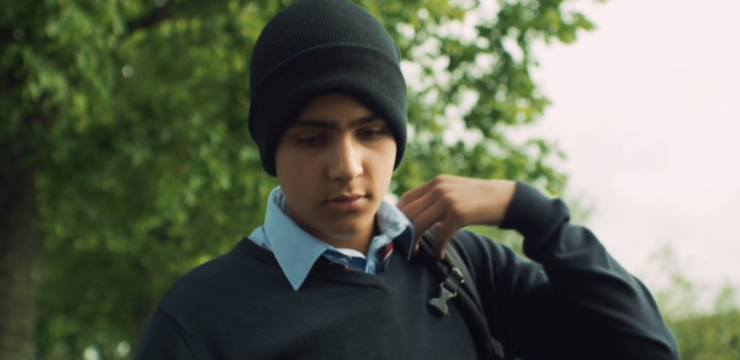
Online harassment or cyberbullying can happen to anyone, but with just a few simple steps, we can all play role in protecting each other.
This type of bullying can take many forms from hurtful and inappropriate messages on social media or other online platforms, to intimidation, impersonation, or even exclusion on group messaging apps.
This short film, ‘Connected’, is based on real life experiences of teenagers in Ireland, and looks at some examples of the types of harassment that happen to people online, and the impact that it can have on the person who is the target.
Bystanders to bullying
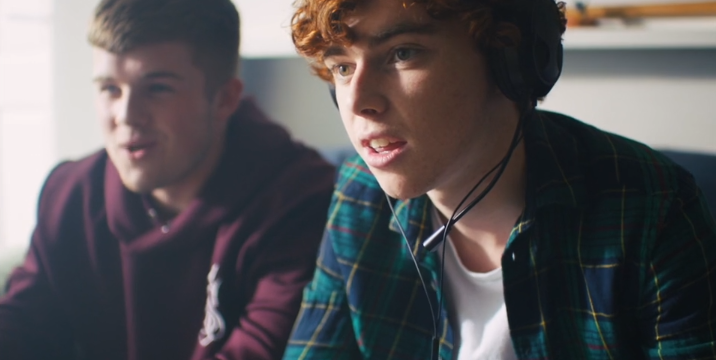
Often there are bystanders to bullying incidents – people who are not the victims or the perpetrators, but who see it happening. Bystanders who witness bullying are put into a difficult situation – they may want to help, but aren’t always sure how, and they definitely don’t want to become future targets of harassment.
Here are some common reasons why people may not want to intervene:
- you think you don’t know the full story and so avoid getting involved
- you may fear being targeted yourself
- you feel it has nothing to do with you, or it is someone else’s responsibility
- you may think the incident is insignificant, and it is not worth taking any action
- you may want to help, but don’t know what you can do
It’s can seem like a tricky position to be in, but the reality is that the higher the number of bystanders there is to an incident, the less likely it is that any one of them will step in and help the victim – a phenomenon known as the Bystander Effect.
However, there are some simple things that we can all do to make a difference, and to support someone who is being bullied, without getting into harm’s way yourself.
Being an Upstander:
What can I do if I see someone being bullied online?
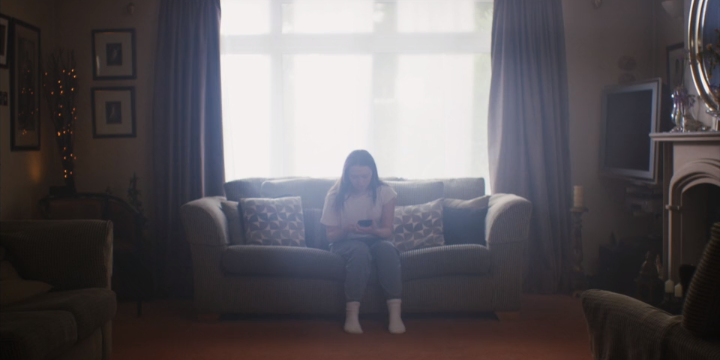
Be a good friend and take a stand against the bullying!
Put yourself in the victim’s shoes – how would you feel, and how would you want other people to react?
Taking positive action when you see something wrong can have a massively beneficially impact on the victim.
An upstander is someone who not only recognises when something is wrong, but as a result stands up for their beliefs by taking action. They will help and support whomever is being hurt, and/or will speak up to correct the situation and make it right.
While confronting the someone who is being hurtful or aggressive is not always the best option, there are lots of ways that you can take action against bullying.
There are a number of positive steps that Upstanders can take to look out for others online.
If you want to help a victim of online bullying, here is the key advice.
1. Be aware:
Is it bullying or banter? Without body language and facial expressions, it’s often hard to know the difference. What might be intended as a bit of banter can often cause offence and vice-versa. If you see something on screen that you think might cause someone to lose confidence or get upset, it’s possible that the person who wrote it did not mean it to be so hurtful.
2. Just Ask:
Asking for help is a lot easier than it seems. If you see someone who is isolated or having a hard time, you can make a difference by directing them to some good organisations out there that provide advice and support. Check out groups like Aware, Bodywhys, Childline, SpunOut, Headsup.ie, BeLong, the Samaritans and more
3. Report incidents:
Whether you are online, at home, or in school, it’s your responsibility to report bullying incidents when you see them. You might not always be able to fix it, but you can always do the right thing – and that means reporting. First off, you can report to websites like Twitter and Facebook. They take these reports seriously, remove anything abusive and even cancel accounts when warnings are ignored. Remember, they never reveal the identity of the person making the report. It doesn’t stop there. Most schools and clubs have ways for you to report incidents, so find out what they are and use them when you need to. Serious cases where you think someone is at risk of harm should be reported to the Gardaí.
4. Tell an adult:
Talking to someone you trust is usually the first step in dealing with any issue. If a friend confides in you, encourage them to tell and adult they can trust such as a parent, relative, friend or teacher. While it usually takes an adult to stop bullying, they can’t do anything without your help.
5. Teach yourself:
Check out Webwise.ie for video tutorials on how to take screen grabs (a skill which will help you to get evidence of cyber bullying behaviour), report incidents to official websites and learn how to configure your privacy. Once you’re good at it you can then show someone else how to do it.
6. Know your options:
Some people have found themselves in trouble for simply liking, sharing or commenting on content on social media sites such as Instagram or on Blogs, or for following and retweeting messages from fake Twitter accounts. Remember you have options, don’t just put up with bullying; leave, unlike or unfollow.
7. Create your space:
Bullying won’t go away if we do nothing! But it can if you do something. It’s up to all of us to create and shape the online spaces that we like to spend our time in. Let’s try and make them positive and friendly environments – places where we can enjoy hanging out.
8. Get informed:
Did you know that there is something called the ‘bystander effect’? It means that often the more people who see something happen, the less likely each individual is to do something about it. This happens online too, strange but true! Don’t leave it up to someone else to do something – step up yourself!
9. Reach out:
A lot of bullying online is anonymous. Imagine how it feels to go into school when anyone and everyone you meet could be the person you think is harassing you. It could become easy to start withdrawing from real friends and become suspicious of everyone. If you know someone in this situation, reach out to them and tell them that you care, and that you want to support them.
10. Do something now:
Online bullying can get out of hand very quickly and people experiencing it can often be completely overwhelmed by it. Sometimes just one message of support is enough to make a difference. Your offer of support can be more helpful than you think, why wait, take action now!
11. Make a difference:
You can make a big difference. It’s a good to stand up to bullying, whether it’s online or in the real world. However directly confronting someone who is being aggressive or hurtful is not always the best way to go about it. You can report, reach out or tell someone, you have lots of options to make a stand against bullying.
12. Stay strong:
Bullying is never right and you shouldn’t ever accept it. But don’t cross the line and bully the bully. It’s ok to point out that cyber bullying should stop, but it’s not ok to start sending abusive message to the bully. Imagine if you were a victim of online bullying – how it would feel to face constant online harassment and abuse on your own? Now imagine what it would be like to have your friends and peers support you. Tackling bullying by taking part in bullying will just make the problem worse. Being strong, assertive, positive and trying to do the right thing always works best.
Additional Supports
Get more advice on internet safety issues and become more involved in making the internet a better place for all users by visiting: https://www.webwise.ie/youth/
You can take control by not putting up with offensive content and by reporting it when you come across it: Webwise cyberbullying checklist
Check out some simple strategies that may help to reduce negative emotions, increase your overall wellbeing, and make going online more enjoyable: Managing your online wellbeing
Other Organisations
Aware
Aware provides support & information for people who experience depression or bipolar disorder and their concerned loved ones.
BeLongTo
BeLonG To Youth Services is the national organisation supporting lesbian, gay, bisexual, transgender, and intersex (LGBTI+) young people in Ireland.
Bodywhys
Bodywhys is the national voluntary organisation supporting people affected by eating disorders.
Childline
Childline is a part of the ISPCC (The Irish Society for the Prevention of Cruelty to Children).
An Garda Síochána
Headsup.ie
Mental health charity
SpunOut
Ireland’s youth information website
The Samaritans
A charity aimed at providing emotional support to anyone in emotional distress, struggling to cope, or at risk of suicide.



